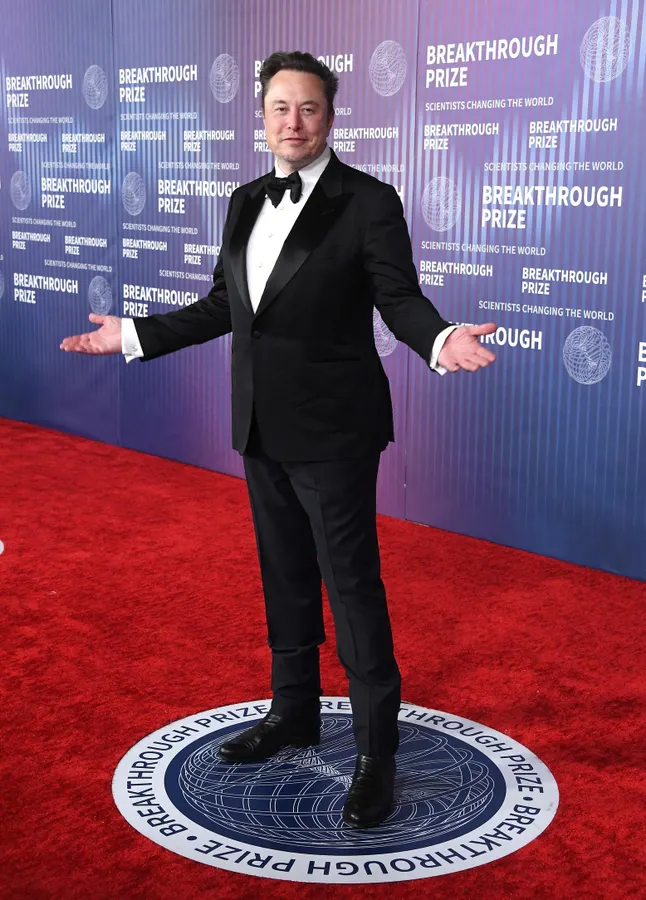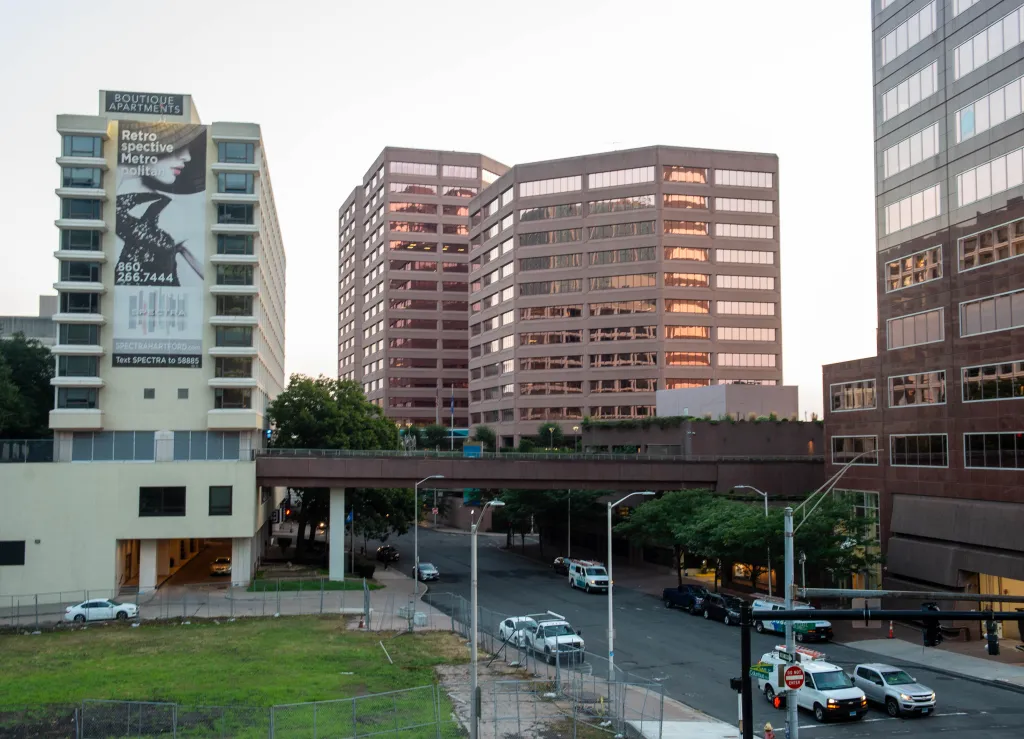Copyright forbes

Elon Musk, long rumored to have undergone hair restoration, has become an unlikely symbol of visible rejuvenation—a status marker in the longevity economy. People are becoming biologically younger yet visibly older—confronting the paradox of modern longevity. Healthspan is extending through GLP-1 drugs, fasting, hormone optimization, and metabolic biohacking, yet the mirror often tells another story. Rapid fat loss can hollow the face, cortisol spikes can thin the hair, and aging, once hidden beneath the surface, is now shifting from internal to visible. That paradox has quietly created a new frontier in biotech. The next blockbuster longevity drug might not extend lifespan at all—it might regrow your hair. Pelage Pharmaceuticals, a UCLA spin-out backed by ARCH Venture Partners and GV (Google Ventures), just raised $120 million to commercialize a topical therapy that reactivates dormant hair-follicle stem cells. Its approach reframes baldness—not as vanity, but as a regenerative-aging problem that could unlock visible rejuvenation for the entire body. And for VCs, the timing is telling: capital is shifting toward visible longevity outcomes—proof that rejuvenation can be measured not just in biomarkers, but in mirrors. If GLP-1s helped people metabolically rewind their bodies, Pelage’s therapy hints at something even more fundamental: reawakening the body’s regenerative capacity at the cellular level. A New Chapter in Longevity Medicine Pelage belongs to the same scientific lineage as Altos Labs, NewLimit, and Loyal—startups pushing toward cellular rejuvenation. Hair follicles are among the body’s most regenerative organs, continuously cycling through growth and rest, making them ideal to test therapies that restore youth biology. Investors like ARCH and GV see more than vanity: hair regrowth is a visible biomarker of biological-age reversal. Pelage’s candidate is a topical small-molecule gel designed to wake up stem cells and restart the follicle’s growth phase without hormones, surgery or implants. It may be the first proof that true rejuvenation can be applied like skincare. MORE FOR YOU The Science: Awakening Dormant Stem Cells With age, follicle stem cells fall into a quiescent state—present but silent. Pelage’s drug activates pathways that pull those cells back into the anagen, or growth, phase. That sets it apart from today’s options: Minoxidil increases blood flow to the scalp, modestly extending growth. Finasteride blocks DHT to slow shedding but carries hormonal risks. Pelage’s therapy targets the root cause: cellular dormancy. “It’s not covering up the symptoms, it’s targeting the underlying biology,” says Pelage Pharmaceuticals chief medical officer Dr. Christina Weng, in an interview with the University of California. “Our goal is to reactivate the body’s own regenerative mechanisms, not to mask the effects of aging.” The company’s lead candidate, PP405, stems from research at Dr. William Lowry’s UCLA lab, where scientists discovered that blocking a specific signaling pathway could reawaken dormant hair-follicle stem cells—triggering visible regrowth in as little as a week in preclinical models. In a recent Dermatology Times Q&A, Weng confirmed that Pelage has now advanced PP405 into Phase 2a clinical trials for androgenetic alopecia, demonstrating clinically meaningful improvements with a favorable safety and tolerability profile. The topical, non-hormonal treatment works by stimulating the body’s own follicle stem cells rather than altering hormones or requiring surgical intervention—an approach designed to restore, not replace, natural growth. It’s a biotech approach to an age-old aesthetic problem: translating lab-grade regenerative science into something you can apply like skincare. Inside The $50 Billion-Dollar Hair Economy The $50 Billion Dollar Hair Loss Economy The global hair-loss market exceeds $50 billion and could double by 2032. Yet most “innovation” has meant new packaging, not new biology. Pelage’s nine-figure raise signals a phase-shift—from consumer wellness toward therapeutic rejuvenation. Brands like Ro, Hims, and Musely have mastered the model VCs can’t quit—turning telemedicine prescriptions into subscriptions—offering finasteride, minoxidil, and other recurring-revenue medical subscriptions. These brands made hair-loss treatment accessible and mainstream, but ultimately treat symptoms, not stem cells. Pelage’s bet is that the future of restoration lies in cellular reactivation, not just DHT inhibition. Even as biotech startups push toward stem-cell reactivation, surgical and aesthetic demand remains strong. The global hair-restoration-tourism industry—anchored in destinations like Istanbul and Seoul—is estimated to surpass $3 billion annually, underscoring how longevity has become not just a science, but an export economy. The Medspa Economics of Hair Restoration Between supplements and surgery sits a booming medspa ecosystem: platelet-rich plasma (PRP) injections, microneedling, red-light helmets, and laser caps. Hair sits at the emotional intersection of youth, confidence, and identity. Losing it isn’t just cosmetic—it’s existential. That’s why the next wave of aesthetic biotech isn’t about looking better; it’s about feeling like time hasn’t won yet. Beyond consumer fascination, the economics of hair restoration have quietly become one of the most lucrative lines in dermatology and medspa practices. Because these procedures are fully out-of-pocket, they carry margins far higher than insurance-reimbursed dermatology. Clinics typically sell series-based packages—a course of three to six PRP or microneedling sessions can range from $1,500 to $6,000, while combination protocols that pair red-light therapy, exosome infusions, or topical growth factors can push total spend beyond $10,000 per client annually. Add-ons like take-home serums, supplements, and maintenance sessions turn what was once a one-time visit into a recurring-revenue model rivaling aesthetic injectables. PRP therapy, which injects a patient’s own plasma to deliver growth factors, has shown statistically significant increases in hair density across randomized clinical trials. Low-level laser or red-light therapy also demonstrates measurable regrowth — one 2021 meta-analysis found a 14% increase in scalp coverage after 24 weeks. Clinics like Great Many—a New York-based startup launched in 2024 by Michael Pollak (Heyday founder) and Steve Klebanow—are building the next layer of hair wellness. The company raised a $3.6 million pre-seed led by BrandProject, with participation from beauty and health-tech angels. Great Many blends in-person medspa treatments like PRP with telehealth consultations and a proprietary “Growth Factor” product line. By bridging clinical and consumer worlds, Great Many embodies the new “hair-health” category—where dermatology meets design. Its treatments deliver incremental results but reveal a consumer base primed for deeper regeneration—and ready for biotech-driven solutions like Pelage’s. For medspa operators and dermatologists alike, regenerative hair treatments now sit at the crossroads of beauty, biotech, and private-pay healthcare—a convergence investors are watching closely. According to Grand View Research, the global hair-restoration-services market is projected to surpass $13 billion by 2030, driven largely by cash-pay medspa demand. From Istanbul to Silicon Valley: Hair Restoration Goes Global Outside the United States, hair restoration has become a booming global industry. Istanbul now markets itself as the “Hair-Transplant Capital of the World,” welcoming more than one million medical tourists annually who spend roughly $2 billion on procedures, according to the Turkish Health Tourism Association. People arriving at Istanbul Airport pass digital billboards declaring exactly that slogan. The trend has been further legitimized by high-profile figures in tech and longevity circles. Elon Musk has been widely reported to have undergone a hair transplant, underscoring how the world’s most future-obsessed leaders are quietly investing in visible rejuvenation. What was once whispered vanity has evolved into a form of biological optimization—an early status symbol of the longevity economy. The GLP-1 Paradox: Healthier, but Looking Older Hair follicles mirror the body’s regenerative capacity. When their stem-cell niches degrade, aging becomes visible. Thinning hair reflects oxidative stress, mitochondrial decline, and inflammatory signaling — the same hallmarks longevity scientists target in muscle, brain, and skin. That makes hair both a biological marker and emotional barometer of aging. The global GLP-1 boom proved consumers will pay for longevity in real time — but it also exposed a new aesthetic problem. Dermatologists now report hair shedding among Ozempic and Wegovy users, a side effect of rapid weight loss known as telogen effluvium. Hormone replacement therapy is also causing hair loss for may users. When the body sheds pounds quickly, it can also shed hair — triggered by stress hormones, nutritional gaps, and protein loss. The result: people who are biologically younger yet visibly older, confronting the paradox of modern longevity. In an era where health optimization can make you feel better but look worse, aesthetic regeneration has become the next frontier of longevity science. The same consumers driving the GLP-1 economy are now seeking regenerative aesthetic solutions — from PRP to red-light therapy and, soon, stem-cell activation drugs like Pelage’s. GLP-1s reshaped the body; Pelage wants to rejuvenate it. This aesthetic fallout echoes a broader theme explored in my Forbes analysis of why VC-backed longevity startups are dying in a $5 trillion wellness market: when biology meets consumerism, hype often races ahead of validation. The Investor Signal: Why GV and ARCH Matter ARCH Venture Partners has built empires on deep-tech biology, backing Illumina, Alnylam, and Forty Seven Inc. (acquired by Gilead for $4.9 billion). Its investment in Pelage signals that regenerative aesthetics may follow the same trajectory as genomics and RNA therapeutics. Equally significant is GV’s role as lead investor. While Google’s venture arm is best known for consumer and software bets, its decision to lead a nine-figure round at a pre-Phase II stage marks a strategic pivot: mainstream VCs are entering longevity biology earlier in the clinical curve. The move echoes GV’s early investments in 23andMe, Verve Therapeutics, and Recursion, signaling that Big Tech’s venture arms are placing long-horizon bets on aging reversal and cellular repair. “Hair is the most visible proxy for youth—and the perfect proving ground for regenerative medicine,” says Pelage co-founder Dr. William Lowry. Pelage’s Comps, Valuations and the Next Exit Frontier Comparable regenerative players hint at the scale of what Pelage could become. Stemson Therapeutics, a San Diego startup backed by Allergan Aesthetics, DCVC, and Gore Range Capital, is developing a cell-based hair-cloning therapy that reprograms stem cells into new dermal papilla cells capable of forming entirely new follicles—a surgical, lab-grown transplant still in preclinical stages but emblematic of investor appetite for true regeneration rather than cosmetic maintenance. Pelage, by contrast, is betting on scalability: a topical small-molecule therapy designed to wake up existing follicles instead of engineering new ones—potentially the first mass-market, non-invasive regenerative treatment for hair loss. Pelage’s lineage also echoes ARCH’s earlier win with Forty Seven Inc., the Stanford spin-out that taught immune cells to recognize and remove aged or diseased tissue. Acquired by Gilead Sciences for $4.9 billion, Forty Seven became a case study in how regenerative logic—retraining the body to heal itself—can move from lab discovery to major-pharma acquisition. Pelage applies the same principle at the follicular level: teaching dormant stem cells to restart growth, not masking the loss. If Nutrafol’s ~$1.2 billion acquisition by Unilever set the ceiling for nutraceutical hair wellness and Hims & Hers’ ~$12 billion market cap marks the DTC benchmark, a successful therapeutic player like Pelage could command biotech-level valuations—between $500 million and several billion on clinical proof alone. Pelage’s Hard Road From Breakthrough to Blockbuster The history of hair-loss innovation is filled with bold claims—from laser helmets to stem-cell serums whose results remain inconsistent and whose clinical claims are still being validated. Pelage must still clear rigorous FDA milestones before its promise becomes proof. The challenge for Pelage won’t be ambition—it’ll be endurance. The longevity race rewards those who can turn proof-of-concept into patience-of-capital. The pursuit of longevity isn’t only about extending lifespan—it’s about restoring vitality we can see and feel. Hair loss, long dismissed as cosmetic, may be the most accessible proof point that aging is reversible biology. If Nutrafol showed that beauty can sell science and GLP-1s made metabolic medicine mainstream, Pelage could make regenerative biotech relatable—turning stem-cell activation into the next household idea in health. The next blockbuster longevity drug might not just add years to your life— it might bring your hairline back to 2010. And perhaps, it will also rewrite the paradox of modern longevity itself—where people have become biologically younger yet visibly older. If Pelage succeeds, that paradox could finally reverse, proving that the future of youth isn’t in adding years, but in restoring what time once took. Editorial StandardsReprints & Permissions



